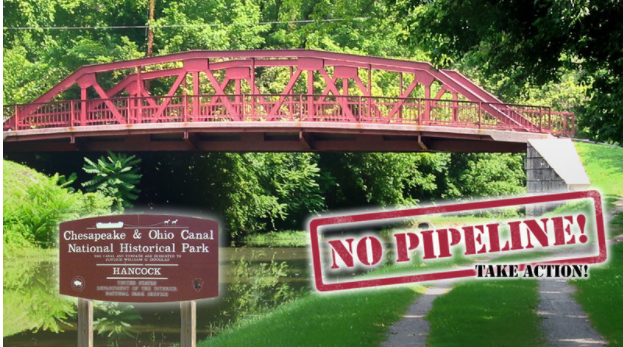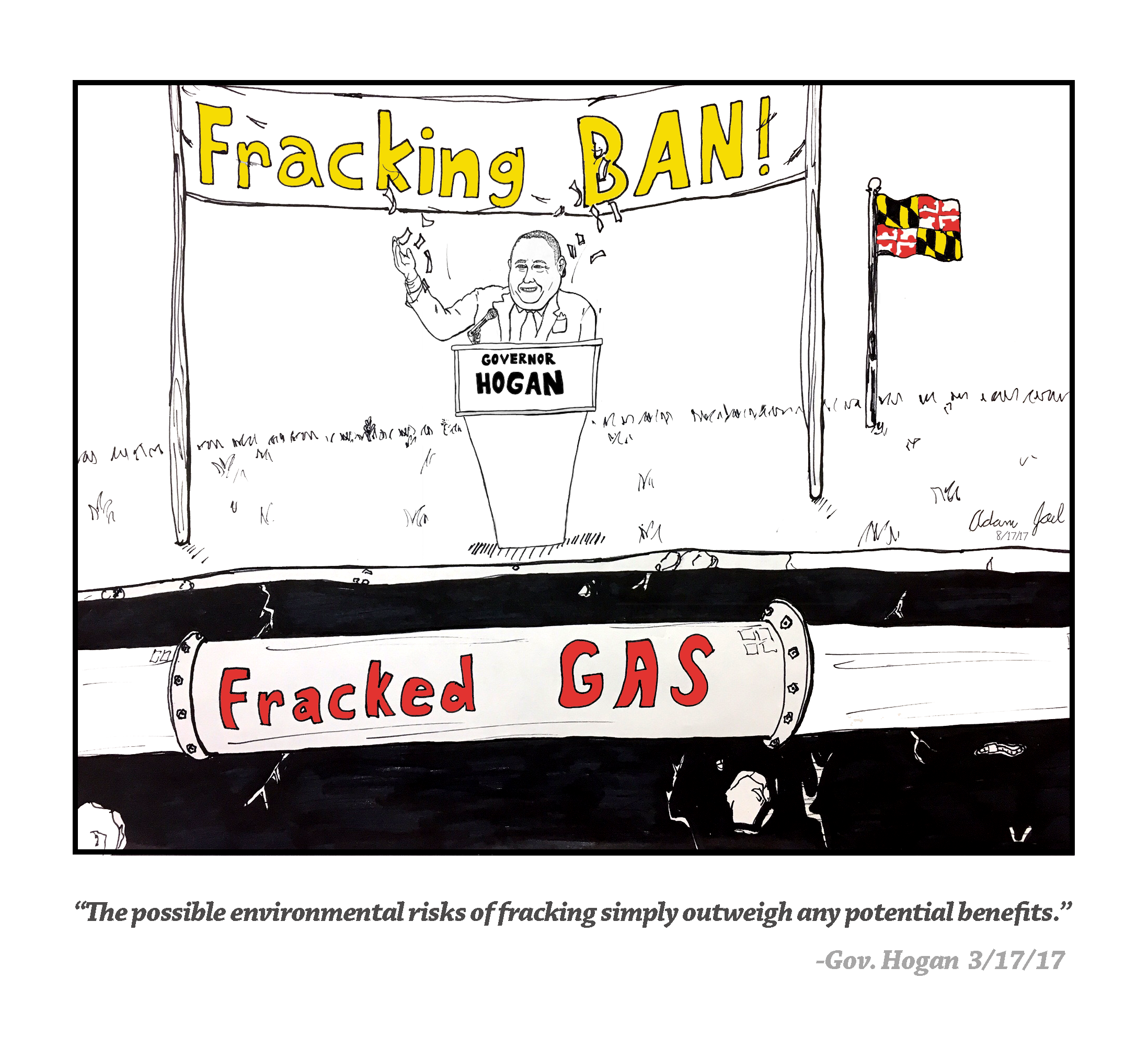
Fact Sheet about the Potomac Pipeline
Join the Movement as an Action Member
In Maryland, our communities are now threatened by a proposed fracked-gas pipeline from TransCanada, the same company behind the climate disaster Keystone XL Pipeline. This new pipeline is known as the “Eastern Panhandle Expansion Project.” The notorious oil company TransCanada would need to drill horizontally under the Potomac River, the C&O Canal, and its tributaries to build it.
The “Potomac Pipeline” would carry fracked gas from Bedford County, PA through Hancock, Maryland and into Berkeley County, West Virginia. It would threaten the health of the millions of people who source their drinking water from the Potomac River in Washington, D.C., Maryland, and Virginia.
To protect our communities and climate, CCAN is fighting to stop the Potomac Pipeline and protect the Potomac River from fracked gas.
Unfortunately, at the federal level we are moving backwards and not forward on climate. There are efforts to revitalize the coal industry and the U.S. has withdrawn from the Paris Climate Accord. And here in Maryland, frontline communities are still under attack, with fracked-gas pipelines, compressor stations, and power plants being proposed all across the state.

The Pipeline Would Run Through Dangerous Karst Geology
The Potomac Pipeline would run through very sensitive topography known as “karst.” Karst is characterized by underground drainage systems with sinkholes and caves and is easily susceptible to the transmission of pollutants through connected underground aquifers. This would allow for the easy migration of pollutants into aquifers that run into the Potomac River.
The pipeline could degrade pristine streams and further threaten public and private water supplies. Using hydraulic directional drilling under streams in karst geology will create pathways for water to drain down the bore holes and dissolve the limestone around the piping. This activity can create sinkholes that could impact the integrity of the pipeline, causing subterranean ruptures and even explosions.
The Potomac Pipeline puts millions of residents at risk
Six million people source their water from the Potomac River. This pipeline would threaten the drinking water of the millions who live downstream from the proposed construction area. During construction, the pipeline would also put hundreds of wells in the local area at risk.
We know that spills happen. Last year, TransCanada spewed nearly 17,000 gallons of oil on rural land. In May 2017, the federal government suspended horizontal drilling on a pipeline in Ohio after crews discharged about two million gallons of drilling fluid into a wetland. A spill from the Potomac Pipeline during construction or operation would be a disaster.
Pipeline Would Deepen Dependence On Fossil Fuels, Contributing To Climate Change
The tremendous growth of Marcellus shale gas production in Pennsylvania and beyond has led to a rapid rise in the production of natural gas, which is often “flared off” on-site – so much so that it can be seen from space. Another area of concentrated flaring is in the Bakken shale oil fields in North Dakota, where the gas industry flared the equivalent of 4.5 million metric tons of CO2 in 2012 alone, roughly the equivalent of adding 1 million new cars to U.S. highways.
Fracking wells leak gases into groundwater and into the air. One of the gases, methane, is approximately 86 times as potent a greenhouse gas pollutant as carbon dioxide over a 20-year timeframe. The combination of flaring and methane leakage during Bakken oil extraction contributes to cumulative heat-trapping emissions that are potentially much higher than other sources of oil.
Pipeline Would Bring More Harm Than Good
Bring More Harm Than Good
This pipeline would benefit only Transcanada — a foreign oil company — and create only temporary jobs for out-of-town workers, putting our health at risk for their bottom line. Furthermore, the pipeline is unnecessary, as our region makes bounding leaps to a clean energy future. And there is already a growing movement of opposition among citizens that live along the route.
The TransCanada application has no justification or evidence that substantiates a “need” for natural gas in the Eastern Panhandle. Yet, Transcanada is already moving in, trying to bully and intimidate landowners that would be affected by the pipelines into signing contracts with eminent domain.
TransCanada Is Threatening Landowners’ Property Rights
The pipeline means farmers and landowners will have to fight to protect their property rights.
In fact, they already are: TransCanada’s landmen are using the same scare tactics that have been used for decades: “Sell your rights or we’ll take them for free through eminent domain.” It’s a dirty trick that divides neighbors and hurts communities. The only winners are pipeline owners.
The pipeline does nothing for Maryland — yet it puts Maryland’s natural resources, and the drinking water of millions downstream, at risk.
We must protect our climate, our communities, and our water, and STOP the Potomac Pipeline.
Take the next step: Read about our “No New Fossil Fuels in Maryland” campaign.
Join the Movement: Email Jamie DeMarco at jamie@chesapeakeclimate.org to volunteer.

Resources
- FACTSHEET: Hogan’s Fracking Hypocrisy, CCAN, February 2018
- FACTSHEET: Stop the Potomac Pipeline, CCAN, June 2017
- LETTER: National environmental and justice leaders call on Governor Hogan to reject new pipelines.
- Synopsis of State Efforts to Repair Gas Leaks, CCAN February 2018
- Submit Comments to Stop Fracked Gas Pipeline Under the Potomac, Potomac Riverkeeper Network, May 2017
- Pipelines: The new battleground over fracking, NPR, accessed July 2017
- Protecting Potomac River from Pipeline Campaign, Potomac Riverkeeper Network, accessed July 2017
Key Articles
- “Maryland seeks dismissal of federal lawsuit by company blocked from building natural gas pipeline,” Baltimore Sun, 6/18/19
- “Keep your pipelines out of Maryland,” Washington Post, 6/7/19
- “Dozens rally to continue pipeline fight in Maryland,” Herald Mail Media, 5/30/19
- “Maryland Legislators Announce Steps to Combat Governor Hogan’s Efforts to Expand Fracked-Gas Pipelines and Combustion in Maryland,” Chesapeake Climate Action Network, 2/13/17
- “National Park Service Weighs in on TransCanada Pipeline,” Eastern Panhandle Protectors, 1/2/17
- “Activists crowd meeting on proposed pipeline under Potomac,” Associated Press, 2/9/17
- “Natural Gas Pipeline Would Run Under Potomac River, C&O Canal,” Associated Press, 2/9/17
- “Maryland Just Banned Fracking, But a New Fight’s on the Horizon,” Food and Water Watch, 4/24/17

